InSites Magazine 2023
The Department of Landscape Architecture and Environmental Planning



Page 02
A message from our Department Head
Page 03
Teaching, Research, Technologies and Practice
Page 08
Site Analysis & Design I
Page 10
The Great Salt Lake Charrette & Capstone
Page 14
Site Analysis & Design II
Page 16
Land Planning for Residential Development
Page 18
Recreation & Open Space
Page 21
Planting Design
Page 23
E-Studio
Page 25
Urban Theory, Systems & Design
Page 27
Landscape Ecology
Page 30
Regional Planning
Page 33
Travel Course: Gulf Coast
Page 36
Student Awards & Scholarships
Page 38
Career & Placement
Page 39
Internship Highlights
Page 40
Speaker Series
Page 42
Student Theses
Page 43
Incoming Grads
Page 44
Faculty Updates
Page 46
Student ASLA Chapter
Page 47
LAEP Alumni
Page 48
Distiguished Alumni
Page 49
In memoriam
tremendous impact each of you have made on the world. This issue of InSites is full of the remarkable accomplishments of our current students and future alumni.

For obvious reasons I often wear a hat. Most of my hats advertise Utah State University and/or the Department of Landscape Architecture and Environmental Planning. As a result, I keep meeting LAEP alumni seemingly everywhere I go, whether it is SeaWorld or a farmer’s market in rural Idaho. I am reminded of a Honda advertisement from the 1960s which I would like to rephrase to reflect my experience; You meet the nicest people wearing a LAEP hat!
LAEP alumni are the nicest people. LAEP alumni (there are well over 1,800 of us now) can be found across the globe. LAEP alumni have achieved remarkable feats in their respective fields, contributing to society in diverse and meaningful ways. As a program, we take immense pride in your accomplishments, and we wish to honor and acknowledge the

LAEP has always been more than just an educational program; it is a place where opportunities are realized, connections are forged, friendships are made, and memories are cherished. LAEP is a community. I strongly recognize the significance of reconnecting with our alumni community and strengthening the bonds that have shaped this program into what it is today. Your experiences, expertise, and insights are invaluable for our current students and faculty. Your dedication and support have been invaluable to the growth and success of LAEP, and we are eager to reunite and celebrate our shared passion for LAEP.
To that end, I am inviting LAEP alumni everywhere to gather together this coming September 2023 to celebrate being a part of the LAEP community. We are planning a variety of activities to bring us together in meaningful ways. If you are able, please come back to campus September 21st through the 23rd to engage with each other and our future alumni in studio, at a football game, and over BBQ and Aggie Ice Cream. Or if you are unable to return to campus, join us for a broadcasted LAEP Speaker Series lecture
(https://caas.usu.edu/laep/ speaker-series/index) celebrating LAEP’s distinguished alumni.
Most importantly, reach out and connect with the LAEP alumni wherever you are. Arrange a time to gather with your local alumni, reconnect with old friends and new, and let us know about it. Submit a photo of your LAEP Alumni Gathering on social media (see the links below). We have developed a website which makes it easier to connect with each other at https://caas.usu.edu/laep/alumni/ index. Stay connected with us on social media, explore our website, and make sure you receive rgular updates from LAEP by providing your current contact information here: madison.mgrath@usu.edu. Together let’s continue to build this wonderful community of LAEP alumni.
Before you gather, send me an email with your address, and I’ll send LAEP hats for your LAEP Alumni Gathering.
You meet the nicest people wearing a LAEP hat!
 By: Professor Todd Johnson
By: Professor Todd Johnson
I am an Associate Professor of Practice, with a degree from Utah State University Department of Landscape Architecture and Environmental Planning conferred in the spring of 1976. I have been employed by several design practices, co-founded Civitas/Denver, and acted as Partner and Chief Design Office at Design Workshop/ Denver for seventeen years. As of this writing I have spent eight years teaching at USU, returning in 2014 to where it all started here in Logan, Utah. Over the course of this time, I/we have been taught, practiced, and continue to teach that teaching and practice must rely on research asking and answering questions that influence the value of planning and design.
The field of Landscape Architecture and Environmental Planning along with allied design disciplines have ranged in opinions and emphasis on art and
science, subjective and objective decision-making and the methods employed to create meaningful designs. Our department has kept pace with the emerging emphasis on research and technology that began in the 1970’s, yet we now face increasing pressure and emphasis on science and research. Without question, as a department, we must accelerate our pursuit of teaching research and technology embedded in our lasting commitment to critical thinking, to solve the world’s most challenging problems.
Research in Landscape Architecture and Environmental Planning is increasingly central to the existence and sustainability of our department, with professors being required to hold PhD credentials to qualify for available teaching positions. A main reason for this is the securing of research grants that are required to support
our membership in the College of Agriculture and Applied Sciences. In academic settings across the nation this shift and emphasis has become the new normal. We might safely say that in the past couple decades practices have also shifted their emphasis and methods, both producing and justifying the merits of their work using metric standards. An obvious conclusion is that research is both an economic engine for academia and a differentiator for critical practices seeking to work on the most interesting and relevant projects in the world. Can anyone see the need for more bridges?
Many shifts have occurred since the founding of LAEP in 1939, often disrupting the focus of academicians, practitioners, and students. These shifts and disruptions have stimulated investigations, yielding improvements to the scope and quality of our work. Consider the shifts from Warren Manning’s crude national overlays to McHarg’s systematized overlay analysis, morphing to Steinitz’s computer assisted methods, and Dangerman’s ESRI. Less sustaining disruptions are also memorable, remember Martha Schwartz and Peter Walker building NECCO and Bagel Gardens in the 1970’s. Is it any wonder that students like me were baffled by the scope and emphasis of the profession?
So, in the next decade we need to consider what demands will be put on us to secure competitive grants
and, most importantly, to prepare students to meet the hiring criteria of major firms and agencies. To try and give shape to the future of our program I provide a few observations, shared with our faculty in order that they might weigh in on the question.
First, I believe that research, science, and art are all part of a family of problem-solving endeavors, they all involve creativity.
Second, the design professions provide us with the ability to solve complex problems using methodologies that are team and collaboration based.
Third, true to most fields of endeavor, technologies and methodologies constantly evolve as the result of academic research, professional competition, and journalism. Therefore, research combined with teaching combined with practice looks like a good relationship.
Fourth, the motivating force in design is the possibility of unique and powerful solutions which might be considered to be either serendipitous or calculated. These unique and powerful solutions will continue to embrace technologies and methods that are new to us and that help us find both serendipity and calculated benefits.
Fifth, the latest technology, artificial intelligence (A.I.), may be the most profound disruption to the way we practice since the advent of computers, the source tool.
The logical conclusion from these five observations is that the profession and the Department of Landscape Architecture and Environmental Planning needs to increasingly embrace research and A.I. in ways that sustain and reinforce our historic commitments, connecting civilizations to natural systems.
I turn to the words of Dr. Geoffrey Hinton, often cited as the Godfather of A.I. quoting from a recent article in the New York Times; He (Hinton) is also worried that A.I. technologies will in time upsend the job market. Today, chatbots like ChatGPT tend to complement human workers, but they could replace paralegals, personal assistants, translators, and others who handle rote tasks. “It takes away the drudge work,” he said. “It might take away more than that.” I feel strongly that we are teaching good fundamental values, methods, and technology skills and that these must remain the foundation of a great program. This is our departmental legacy.

But there are some nagging fears about the words of Dr. Hinton and the diminishment of practice professionals in our faculty or PhD’s with little practice experience to bridge the ever-increasing gap. How will we provide our students with the necessary practice and research skills to meet the dynamically changing world of planning and design in the A.I. Era?
In the spirit of making this a collaborative piece I asked a group of faculty colleagues for their opinions and responses to the challenge. Dr. Keith Christensen is our department chair and brings considerable research capability and commitment to the underserved populations of our world. Dr. Huaqing Wang is an Assistant Professor with emphasis on data driven decision making and the morphology of parks. Dr. Daniella Hirschfeld is an Assistant Professor with emphasis on climate adaptation, planning, urban ecology, and environmental justice. Dr. Carlos Licon is an Associate Professor with academic and professional experience ranging from Architecture to BioRegional Planning. He draws to create and knows how to seek, analyze, and use data to design. Dr. Benjamin George is an Associate Professor with emphasis on virtual reality and online design teaching. Caroline Lavoie is a Professor and longest-tenured faculty member. With an emphasis on design theory and urban design, she draws beautifully. David Evans is an Associate Professor of Professional Practice with over four decades of experience in planning, landscape architecture and urban design. Jake Powell is an Associate Professor with specific responsibilities to CAAS Extension and outreach. Dave Anderson is an Associate Professor of Professional Practice in support of community outreach and vital to departmental recruiting. Dr. Ole Sleipness is an Associate Professor whose experience spans the gamut from large scale planning to public lands to site design, from digital data to drawing. Dr. Brent Chamberlain is an Associate Professor of Professional Practice with emphasis on geovisualization and information visualization to solve complex planning and design problems using digital means. Here are their opinions.
Keith Christensen: As A.I. technologies become more visible they evoke both wonderment and fear, as have many past technologies which brought major changes in society. Past disruptive technologies have increased information availability, brought about savings in time, and increased productivity (think calculators, CAD/GIS, smart phones, etc.). Planners and designers have bene-
fited greatly from the adoption of these technologies, and will continue to do so with A.I. LAEP plays an outsized role in this process by helping planners and designers understand that A.I. is a powerful tool of assemblage, and how it can best support their creative and analytical skills to introduce new approaches to consequential problems. The impact of A.I. technologies on our disciplines will be best influenced proactively rather than adapted to afterwards.
Huaqing Wang: A.I. technology has been increasingly adopted in many industries, and landscape architecture is no exception. A.I.-powered tools can help landscape architects create more accurate and efficient designs by automating tasks such as mapping terrain, analyzing environmental data, and generating plant palettes.
While A.I. technology has the potential to enhance the work of landscape architects, it’s unlikely that it will completely replace them. Landscape architecture involves a combination of technical skills, creativity, and critical thinking that require human expertise. Additionally, the field often involves interacting with clients and other stakeholders, which requires communication skills and an understanding of human needs and preferences.
Overall, A.I. technology can support landscape architects in their work, but it’s unlikely to replace them entirely. Instead, it’s more likely that A.I. will become a valuable

tool that landscape architects can use to improve their work processes and deliver better results.
Daniella Hirshcfeld: Everyone is talking about A.I. as a major new disruptor that will replace people in short order. However, I see A.I. as a tool that responds to human prompts, reflects back to people things we ask to see, and recirculates our ideas in both innovative and repetitive ways. Our job as educators is to train the next generation of students to use this tool and leverage its power. By pointing the tool in the right directions, we can focus on solving the pressing challenges of our society today and achieve sustainable and resilient futures. The power we have is in the direction we point this resource. Research, the systematic study of information can help us understand the best and most strategic ways to point this new tool.
Carlos Licon: Through time, design professionals have always been excited and interested in applying new tools, not only to make the task convenient or more efficient but mainly to elevate the professional output. Creative and well-supported processes allow designers to address complex issues and facilitate involvement and participation in the design process. The right tools combined with the best information will, in turn, help design professionals develop sensitive and meaningful proposals for an increasingly diverse cultural social mix and with a long-term understanding of the impacts this profession outputs have at both local and global scales. As artificial tools to increase our intelligence merge with our discipline, it will be essential to maintain the vision of our ultimate goals and not get distracted by the fascination and contemplation of the tool.
Ben George: I believe that A.I. will be a disruptor in world markets at the level of the Industrial Revolution, resulting in major upheavals in the way we function, but ultimately resulting in positive improvements for the majority of people. In landscape architecture the use of AI will touch nearly every aspect of the design process. Broadly through an ability to analyze large data sets and provide insights into complex design problems, and more narrowly in areas such as plant selection and placement, water usage, and other critical aspects of landscape design. Ultimately it will enable landscape architects to work more effectively and efficiently, impacting a greater number of landscapes and penetrating new markets. At the same time, the future is fraught, with A.I. potentially providing the opportunity for a myriad number of allied fields, and even
amateurs, to compete for traditional landscape a rchitecture projects and erode market share and professional prestige.
Caroline Lavoie: I teach design fundamentals and urban design. The use of data and technologies can really help in complex fields such as urban design to inform on the complex problems related to large scale issues and create relationships that could not be possible to see.
For design fundamentals, the most important gift to students is the confidence to rely on their perception, emotions, values, intuition, and a set of design tools that allow them to explore and communicate their ideas. To design is a physical action, not just narrative impulses nor a series of equations. Starting with drawing helps bring the body and mind in sync for creative outputs. Those are rich in discovery, which is crucial in a designer development.
Dave Evans: Reading this piece caused me to consider the many ways that technology has driven my work for 40 years. I am cautiously optimistic that landscape architects will rely on our creative and analytical skills to use A.I. for the better. Hinton’s concerns give me pause, while Huaqing’s insights and optimism give me hope.
Ole Sleipness: Technological advancement has brought vast improvements in capacity to our profession and world over the past two decades. It also has made our society kinder, more generous, joyful, gracious, balanced, and especially self-controlled. Just kidding. However beneficial, technological proliferation may have a role in its dependents’ compulsiveness, anxiousness, social disconnection, and other detriments to human health and well-being. While A.I. has an air of inevitability, I am skeptical of its purported unadulterated goodness, particularly as it relates to the creative design process.
When muscles are not exercised, they become weak, underdeveloped, and eventually atrophy. So it is with the mind, including its capacity for creativity. While A.I. is often touted for its capacity to generate design products—images, renderings, and visuals—its biggest impact may well be on the process of creativity. The design process and its inherent struggle is akin to resistance training in the gym. It’s not always fun. Sometimes, it’s painful. But it builds our capacity
to think creatively, to challenge preconceptions, and ultimately discern the quality of design ideas, however fearfully or wonderfully rendered. A.I.’s possibility of easing this process, reducing the struggle, and lessening the resistance experienced in the design process is a double-edged sword. Those of us who were fortunate to experience that struggle will be able to maintain some strength and creative capacity—if we continue to exercise it. But future generations who don’t experience a creative process of struggle and resistance may be confined to a future design process of doom-scrolling through A.I.-generated images of bad design, while lacking the discernment needed to recognize them as such. And that task would be perfect for A.I. anyway. It’s imperative that design education exercises the mind’s creative capacity, building strong and capable designers who possess discernment, so our profession might use this powerful technology rather than be ruled by it.
Brent Chamberlain: If there is some kind of algebra or calculus that can connect our legacy to the future, we should find it. Put in an algebraic sentence it might look like this: Historic Values>Background Knowledge>Methods of Art and Science (including Research/ Funding)>Technologies (including drawing and A.I.) = Critical Contemporary Curriculum and Practice. We look forward to current and future disruptions with an eye to preparing students to embrace the most complex problems facing us. We respect the foundations of the program as set out by Laval Morris in 1939 and all who have contributed since. For the foreseeable future thinking, drawing, and creating will be directed by us humans and greatly assisted by current and advancing technologies embodied in the notion of artificial intelligence (A.I.).
Support Images: Huaqing’s CELA Poster, Caroline’s Model (from 1350), Licon’s Water Meter


“I’ve always been really fascinated by patterns and I’m good at spotting them. As I was sitting looking at these maps, I began to see a pattern. You can see the same shape in the topographical map, in the map of rock types, in the vegetation maps, in the wildlife map, even human settlements follow this pattern. It really demonstrates how everything is connected; you cannot consider changes to one of these aspects without considering changes to all of them.”
- Antonia (Tawni) GeorgeThe objective of this class is for students to understand and perform the detailed process of site analysis. The site analysis process sheds light on the ecological, cultural, and economic influences of existing conditions within a region and on a site. Analysis is used to inform design concepts with the intrinsic characteristics of the site. Students did this through the study of landscape characteristics, influencing factors, and user and stakeholder characteristics.
The class worked through a series of five projects, organized as a progression from a general site analysis of a special place from their childhood to the detailed inventory and analysis at both regional and site scales.
Students used this evaluation of the site to take a design intervention through the concept stage. The final project is a culmination of lessons learned from these projects and works toward a basic understanding of the complex issues surrounding the decreasing water levels in the Great Salt Lake in preparation for the department-wide Charette.
In one project, students went on a self-led field trip to the Shoshone Nation and site of the Bear River Massacre. The information they gleaned from this visit informed two of the semester’s five projects.


“I learned that when creating a design, it is vital to discover the unique characteristics of the site and surrounding region. Each site has cultural, ecological, and geographic features that make it significant. It is my job as a landscape architect to find and highlight these characteristics in my design.”
-Hailey Hicken

“This class has broadened my understanding of landscape architecture, and I now recognize its importance in large-scale projects. It has added yet another dimension to our profession, highlighting the many things that landscape architects can do. It has been a positive experience for me, and I have been grateful for the opportunity to work alongside such amazing people in the studio.”
- William FriederSpring of 2023 was an exciting semester for the Senior Capstone class. The focus of the department-wide charrette and the resulting projects was the existential threat of losing our Great Salt Lake. LAEP senior class leadership during the Charrette yielded proposals responding to ten exciting and relevant questions. The seniors then chose to take five of those initiatives through the rest of the semester, all focusing on getting water into our Great Salt Lake.
The five initiatives are:
GSL Eastern Shoreline: An eastern shoreline model for development to establish a western frontage of responsible development and increased awareness of the critical importance of the GSL wetland environments.
Bear River Massacre Site: Design of a landscape commemorating the tragic Bear River Massacre in Southern Idaho with responsible treatment of the river and surrounding lands. These best practices to ‘heal’ the river and subsequently the GSL can be used throughout the GSL watershed.
International Center for Saline Lake Research: Design of a saline lake research center on Antelope

Island that attracts global experts and their research, citizens of Utah, tourists, and school groups.
The Jordan River Confluence: Planning and design of new central park in Salt Lake City at the Jordan River Millcreek Confluence and adjacent to the I-15/I-80 - near the “Spaghetti Bowl.”
Designer’s Toolkit: Creation of a toolkit guiding professionals and citizens in land use and landscape design decisions that return water to the Lake.
Though the five teams had the same end goal of getting water to the Lake, the projects varied widely, which was a different approach to the Senior Capstone Class than in years past. This opportunity allowed the students to have a unique studio and stakeholder experience in their efforts to Save the Great Salt Lake.


“This year’s capstone project has helped me realize the importance of working collaboratively with classmates and professionals to create solutions for complex problems. I have used the skills I’ve learned in the past four years to work with my team and propose a Jordan River revitalization idea and a Wasatch Central Park that introduces the idea of putting nature first. Hopefully, what we have done in our studio will provide precedents for communities throughout Utah to follow. I have enjoyed working on this project and hearing from classmates about their ideas of getting more water to the Great Salt Lake and protecting the lake.”
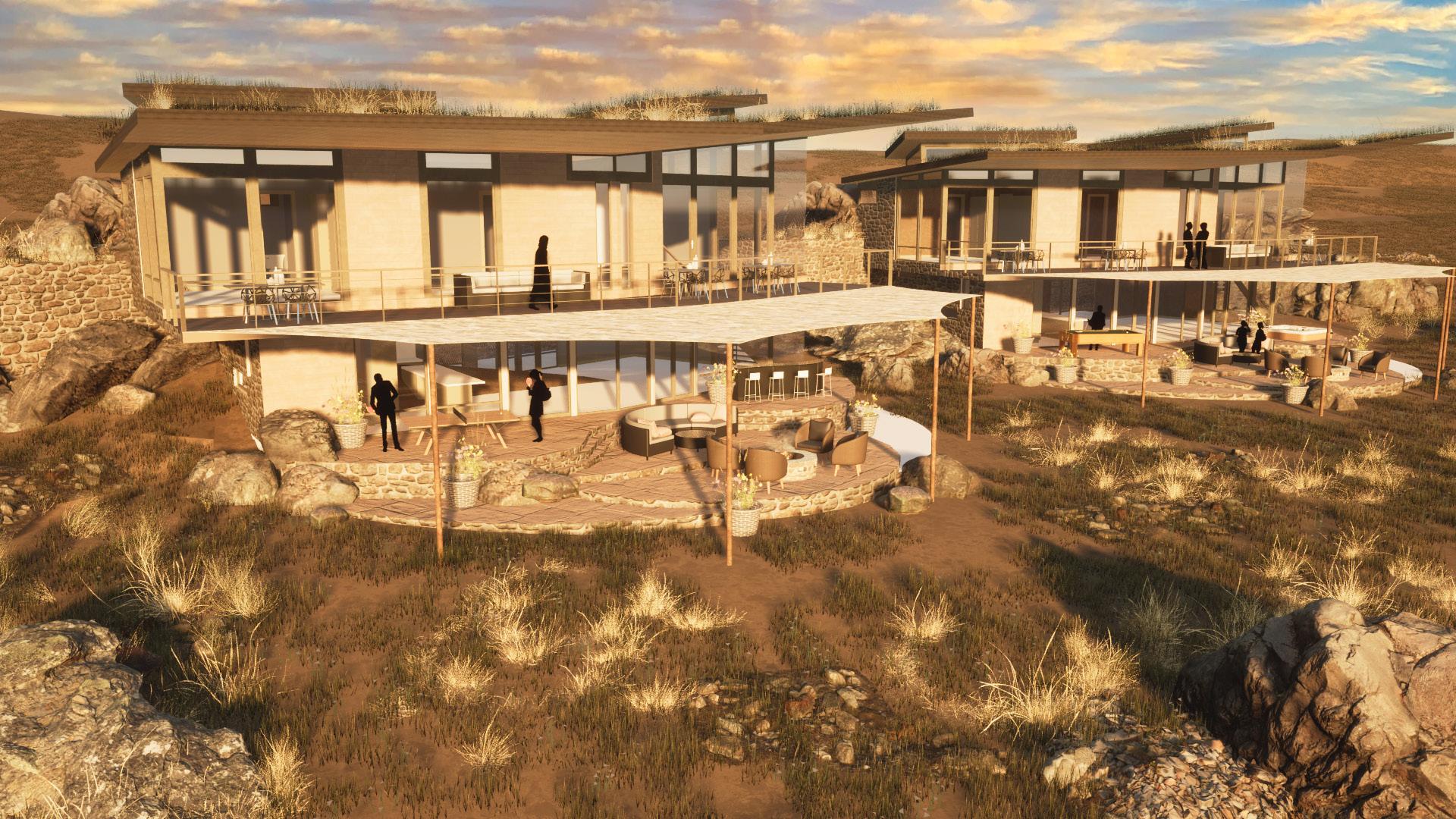 -Annika Tingey
-Annika Tingey
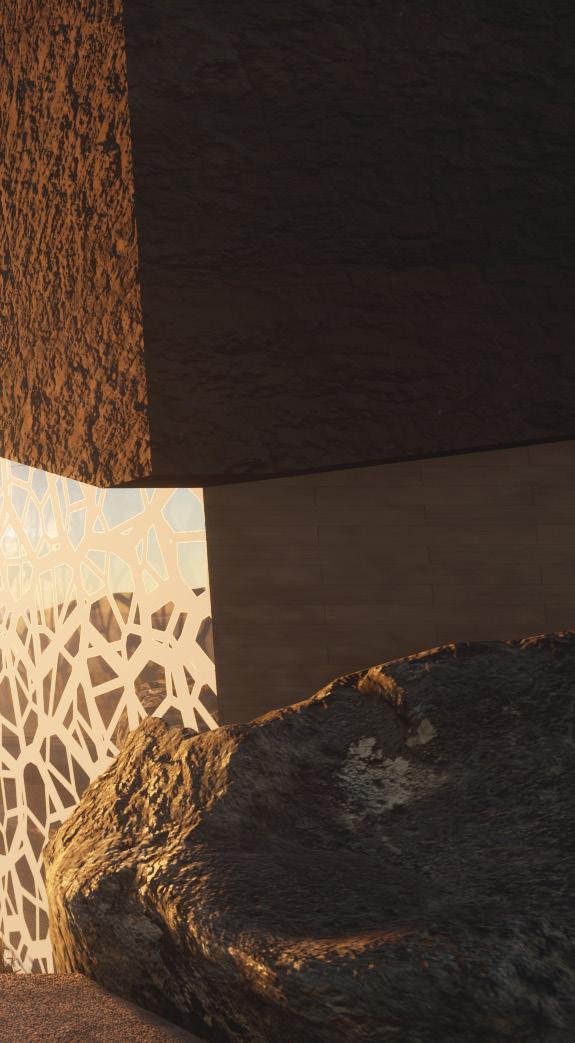
During Spring Semester 2023, Dave Evans taught Site Analysis and Design II and expanded upon the principles taught in Site Analysis and Design I.
Dave revitalized the annual field trip to SLC Firms after a long break due to COVID. This invaluable experience allowed the students to visit several firms, including MGB&A, Denton House, Terracon, and Loci. Students experienced several office

dynamics and gained appreciation for real-world projects through their interactions with professionals and projects.
The culminating event for the studio course was the eighth annual Dean’s Prize competition for the LAEP sophomores and first-year graduate students. The 2023 Dean’s Prize was the preparation of a site master plan of a transitional community - The
Other Side Village located at 1850 West Indiana Avenue, just off Redwood Road in Salt Lake City. This project was in partnership with the landscape architecture firm LOCI. The students’ designs encompassed Phase 2 and included three neighborhoods, a dog park, a community center, central park, and a memorial chapel garden. In addition, the project included the integration of public open space adjacent to the designed housing as well
“LAEP 2720 taught me to keep the people I am designing for at the forefront of my focus.” -Cade Chidester
as pedestrian circulation and streetscape improvements.

The Dean’s Prize is an opportunity to provide a real-world experience for LAEP students, receive feedback from high profile jurors and be acknowledged for their outstanding performance. A total of 10 teams of 4 to 5 students competed. CAAS Dean Ken White offered $2,000 in prize money that was split between the first and

second place teams. The jury consisted of CAAS Dean Ken White, CAAS Associate Dean Mateja Savioe-Roskos, USU Government & External Relations Jennifer Seelig, USU Associate Director of Facilities Planning Jordy Guth, LAEP Department Head Keith Christensen, LAEP Professor David Anderson, CEO of the Other Side Academy Tim Stay, Partner/Principal of LOCI Michael Budge (BLA ‘04), and MLA Candidates
Sam Johnson (MLA ‘23) and Lilian Taft (MLA ‘23).
Dean’s Prize First Place Winners: Cade Chidester, McKahl Johnston, Remington Masten & Amy Reid

“During the Land Use for Residential development studio, our class was tasked with learning how to develop sites in ways that we have not before. Taking Bioclimactic, ecosystemic, hydrologic, soil sciences, and other considerations into our designs to contribute to the overall outcome of the projects. These new challenges and ways to look at site and land planning helped us learn and grow to become more complete as Landscape Architects, and be able to not just create beautiful landscape designs but also develop neighborhoods and communities efficiently and effectively.”
-Zach SannarThis year, the Land Planning for Residential Development studio was co-taught by our visiting professor Daniel Jost, who helped enrich the scope and insights of the course. The students were busy applying solar charts, and temperature tables, mapping their childhood explorations, making models, sketching on paper and their little electronic pads, and building their design and planning skills.
The Junior class had three projects: applying bioclimate design considerations in a small housing project, a short exercise in childhood neighborhood mind-mapping, and a design project of housing proposals for the southern part of the Cache Valley.

The final project was located where Millville, Providence, Logan, and Nibley connect. Large lots along the Blacksmith Fork River have been used for several generations in agricultural activities. As the towns (then cities) grew and met with each other, the area is now surrounded by single-family homes (old and new), industrial warehouses, and commercial buildings mixed with the remaining farmland. The site is supported by a growing network of roads and infrastructure, bringing more people, traffic, noise, and landscape changes. Students developed proposals to provide a variety of housing opportunities and encourage adequate settlement patterns close to urban and natural amenities for the new and current residents.

LAEP 3100
“I also speculate that what the future generations take interest in will be determined by what we do now. If we prioritize and value hiking, skiing, swimming, etc., then our children will follow suit.” -Renee Randall
The Recreation and Open Space Studio, taught by Professor Ole Sleipness, began by reflecting on what recreation means to each student, and asked them to reach out to different generations of relatives to see how recreation has changed over time. This, along with sketches submitted each week,

provided them with the base to then practice their recreation and open space design skills at several different scales and locations.
Rec and Open Space was again coupled with the Residential Design Studio, giving the students opportunities to design recreational open space in a residential setting. Before diving into this process, students worked with Josh Runhaar, Executive Director of Neighborhood
Nonprofit Housing Corporation, to design the recreation areas within NNHC’s Smithfield Pointe development in Smithfield, UT. Groups created a hypothetical family, and with considerations to existing topography and lot layouts, designed connective open spaces to provide recreational opportunities for likely residents.

This guided the students into their individual final project, which
included several large parcels at the intersection of Logan, Nibley, Providence, and Millville. The parcels, totaling 81 acres, offered the consideration of many different surrounding uses. These, along with separate city zoning restrictions, and ecological river and runoff restrictions, provided the framework for the students to design their residential and recreation layouts. Through creative housing combinations and open space
connections, students proposed different forms and layouts of recreation.
The Studio concluded with a trip to see real-life examples of designing recreation in sensitive areas, the Great Salt Lake Shorelands Preserve, and how residential design and recreation design can be combined effectively in Daybreak, UT. The visit to Daybreak, guided by LAEP alumni and professionals, Mike Budge (BLA, ‘04), David Durfee (BLA, ‘17), and Cameron Blakely (BLA, ‘18), was a great chance to see a variety of projects and hear insights into the design process.
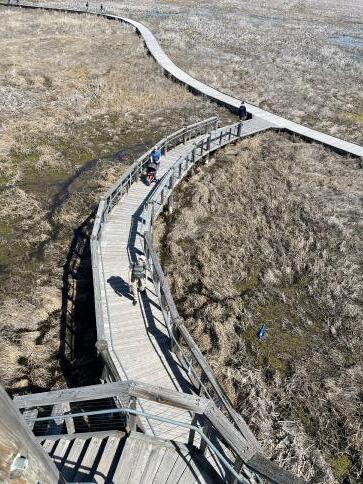
Students will be able to take the skills they have learned in the Rec and Open Space Studio into their future Urban Design Studios. Professor Sleipness looks forward to future collaboration with professionals throughout the area.




“As landscape architects we are privileged to work with such a unique artist’s medium: plants! From form, texture, seasonal interest, to zones and water requirements, there’s so much room for design creativity. I especially enjoyed working with Riverview Elementary school. A 1.5-acre detention basin filled with plants? Sweet!”
-Mary Claire JenningsIn LAEP 3500: Planting Design taught by Professor Benjamin George, the students learn valuable insights and techniques that affect the planting on a site. The students experiment with vignettes and concept plans to highlight the planting type and styles they choose to include. They learn about color theory with plants, seasonal interests, textures, sizes of plants, and how to adapt to the audience of the garden.
One of the most memorable trips for the students was a field trip to Riverview Elementary School in Saratoga Springs, UT. This elementary school has a plot of land that is currently used for a retention pond. The school wants to create an educational garden where the students can be outside


and get hands-on experience with nature during their classes. The students came back full of energy and excitement for this project.
For most of the students, this was the biggest site they had designed up to that point in their education. It was great experience to work with a real client and get real feedback and programs for the site that the school really wanted. For the final presentation of the project the principal, various teachers and PTA members were able to join the group on USU campus. The field trip wrapped up with a visit to the Red Butte Gardens in Salt Lake City, UT.
The students were amazed at the creativity of design with the plant
material. It was also a great teaching time where the students got up close and personal with the plants. Many of the students learned a few new plants that day to add to their personal libraries of plants.
“I’ve had an absolute blast in 3500! Ben has been a great teacher, and he has been a wonderful guide as we navigate the world of planting design. I’ve learned there are quite a few more layers to planting design then picking out a few pretty plants, that’s for sure.”
-Hazen Lawson
Winning competitions affirms that our program and department are preparing students to excel in their future endeavors. This year’s EStudio found three teams of graduate and undergraduate students who swept the awards at the Utah Real Estate Challenge. The students, teamed with business students from the Huntsman and Eccles Schools (USU and University of Utah) presented before an audience of 400 bankers, investors, and designers taking first, second, and
third prizes totaling thirty-five thousand dollars. Our teams were mentored by Kurt Altvater (BLA 1981), and Senior Vice President at CBRE San Francisco. In four weeks’ time the students submit a five-page conceptual design and pro-forma to move to the money round. With an additional four weeks, they and their business partners prepare and present a twentyfive-page proposal with site and architectural plans and a full project proforma.

Our students bring their collaborative skills and studio culture to the table in order to design and format the proposals at each stage of the event. They learn so much about speed in the process and working with mentors to design sites and buildings with clear value propositions, design goals, and physical outcomes. The sense of accomplishment from this competition and the EStudio class is intended to stimulate a deeper dive into the design process with the aim of practice-level performance. We are so proud of this year’s teams:
First Prize ($20,000) Annika
Tingey and RaeLee Yancy
Second Prize ($10,000) Braya

Robbins and Caitee Frost
Third Prize ($5,000) Addison
Martin and Alaina Prase
In addition to these teams the class has four other individual students competing in separate submittals for other competitions. These include Randy Smith competing to “Repurpose Sea- platform Oil Rigs”, Lilian Taft embracing “Tactical Urbanism in Downtown Logan”, Michaela Clinger taking on” Floating Cities in Indonesia”, and Landon Puffer investigating “Technology in Playscapes”. Each of these designers have sought out professional mentors to identify their value propositions and bring these into program and form.
The EStudio class is taught by Todd Johnson and Caroline Lavoie and supported by LAEP’s dedicated faculty.
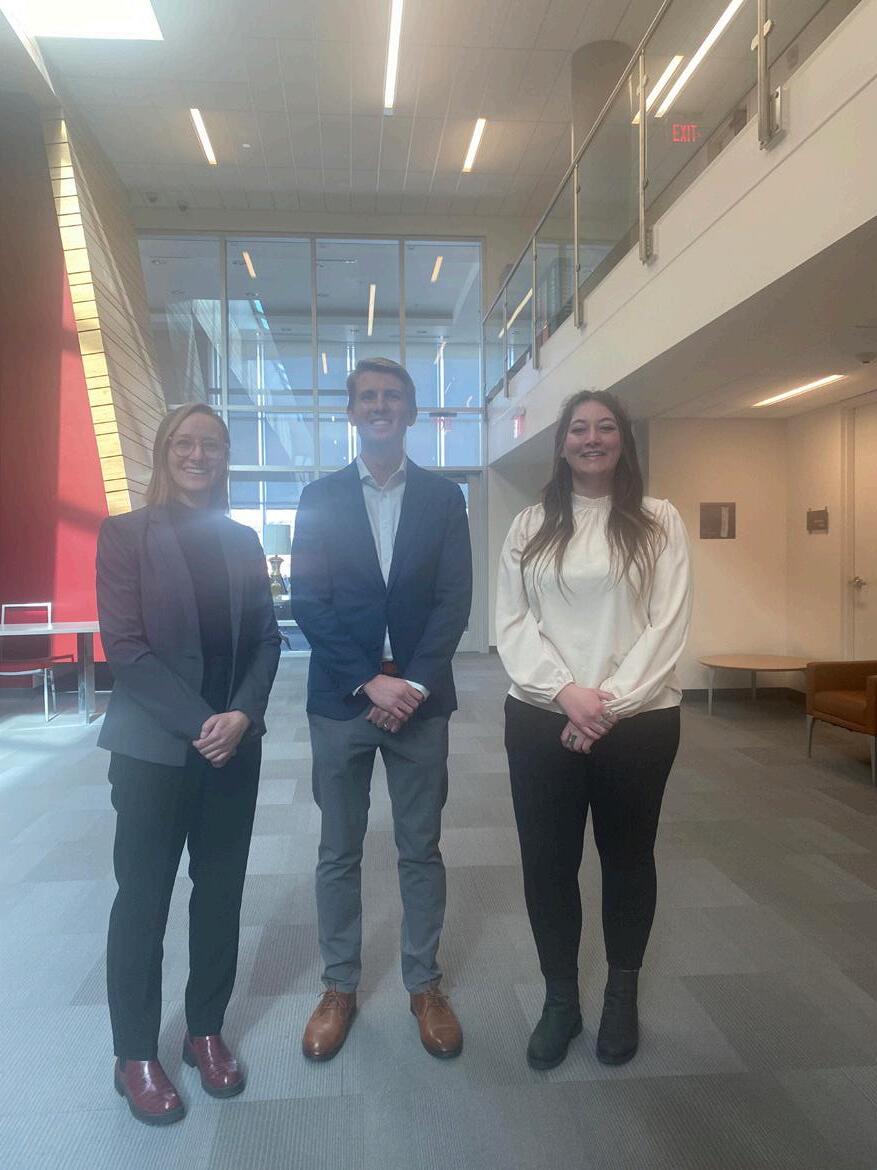
“It was an incredible learning experience working with the city of Idaho Falls. The opportunity to work directly with city representatives greatly improved my ability to learn first-hand what proper city planning can accomplish.”
This class-wide, semester long project emphasizes the relationship between the built environment, natural amenities, and natural resources. The Fall 2022 Urban Theory and Design studio aimed to analyze the built and unbuilt areas of Idaho Falls to meet the needs of the city’s growing population, and incorporate existing initiatives stated in the client’s guiding documents (Imagine IF and Connecting our Community). The forward-thinking city and its planning department were keen on having teams of students work on envisioning the future growth of the city.
The city of Idaho Falls serves as a gateway to Yellowstone, Jackson Hole, and other recreational destinations. Patterns of development have been influenced by pioneers, the Union Pacific Railroad, industrialization, agriculture, education, and tourism. Gateway communities tend to overlook the needs of their own citizens in pursuit of serving the tourist industry. Idaho Falls and the community have united forces to combat these challenges and issued the Imagine IF document, which describes a collective aim for community amenities. Missing “Middle Housing,” walkable centers, and celebration

-Brent Hood
of the river are central themes that the city wanted to focus on. The studio aims to address this need by investigating various parts of the city as candidate sites for housing and mixed-use development. All teams focused on connecting the habitable spaces and the buildings to a walkable public realm.

Six sites were selected to demonstrate the incorporation of middle housing and walkable centers. Different parts of the city come from different growth histories, have different assets, and offer specific challenges. By addressing a variety of districts and areas of Idaho Falls, the city explores how they might reinforce its identity under the pressures to grow in place-based approaches.


“Collaborating with Idaho Falls on the trajectory of growth throughout their city was an incredible opportunity to gain hands on experience in understanding and implementing, stabilizing, and empowering urban design principles. Working with an incredible team and phenomenal mentors on challenging opportunities within our district made for an exciting and rewarding experience in the Urban Theory studio!”
- RaeLee Yancey“The UD studio was fast-paced, in-depth look at Idaho Falls. Students worked directly with community planning staff and heard from local developers and housing experts. The class explored regional and site-specific issues in developing a vision for walkable centers throughout the city. I was impressed by the students’ attention to local distinctiveness and consideration for connectivity of green space and walking/ biking paths.”
“Working on the final project was good practice on how to translate our knowledge of landscape ecology to a wider audience.”

-LAEP Student
Landscape Ecology is a language that informs our understanding of the world around us and helps us to engage in planning activities. By learning about the structure and function of places students tackle complex questions.
In this class we focused on understanding landscape ecology through both data analysis and real- world settings. Students were taught the fundamental building blocks needed to assess landscapes and statistically evaluate changes that are occurring.
To ground the theories of landscape ecology in real world settings, students designed and conducted team research projects. The students, through their work came to recognize the

important lessons articulated in detail below that they will carry into their future efforts.
First – so much more information is needed to answer the complex challenges they hoped to tackle. One team, aiming to understand the impacts of the drying Great Salt Lake realized that tracking the drops of water was nearly impossible. The team thought it would be easier to show how the wind blows, but this too was more complicated than they originally imagined. Another team explored how trees behave in the fall seasons, looking to mimic studies of east coast trees in our Western landscape. They soon realized that we need better data on our local trees and are hoping
to continue gathering this needed data. Despite the data limitations, both teams uncovered truths about our region and learned to put the concepts of landscape ecology into practice.
Second – scale is of critical importance. Lectures on this topic do not meaningfully drive home this lesson. Students looking to identify the best locations for stream restoration found that they could identify watersheds, but they could not get the scale of the stream. This finer scale analysis will need to wait for another semester. Another team of students found this same lesson when they looked to understand the potential for Logan to be become a bee city. Their project
started at the scale of the valley and ended with site scale analysis. Linking these different scales helped them understand the importance of the topic.
Third – having solutions is not enough. Even when we know that bee boxes and planting multiple crop types on an agroecosystem are the best courses of action, we do not necessarily know where to use these steps. One team worked to identify the parcels in Weber County that would provide the greatest biodiversity benefits. They found general areas and this work will inform next steps in ongoing research.
The analytical approach brings together multiple perspectives and
thus challenges the students to do excellent work. Students appreciate this challenge and enjoy the interdisciplnary nature of the course. For example, one student wrote “Working on the final project was good practice on how to translate our knowledge of landscape ecology to a wider audience.” The students collaborated across departments, pushed their own boundaries, and developed high quality finals posters.


“My perception of planning and ecology has changed greatly during the course and project. I know I was always interested in explaining my spatial analysis skills to environmental planning and outputs, and this project gave me the space to expolore that interest. “
-LAEP Student
The Great Salt Lake has been abused and taken for granted for the past 100 years. We are finding out how important the Lake is to the identity of Utah and the livelihood of its people. The history of the State and the Basin have been tied to the railroad since the

joining of the Transcontinental Railroad in the basin at Promontory Point. Connecting Promontory to Salt Lake City resulted in the establishment of a regionally prominent city and the Wasatch Front known for its unique culture, scenery, and industrious people. The railroad and Interstate 15 promoted an industrial swath with the growth extending out to the Lake which was seen as utilitarian and served as a dumping ground.
With the Lake’s water levels in jeopardy for the first time in thousands of years, Utahans are growing concerned for the future of this beautiful and delicate place. Questions regarding the biggest culprits and/or silver bullet solutions do not appear to be effective pursuits. On the other hand a “common sense approach” might investigate the significant users of the water and which users are most
important to the future prosperity of the area. It may also be useful to map and know the areas (called watersheds) that feed our valleys, grow our crops, and provide water to the Lake. It would make further sense to gather the people and leaders of the towns and rural communities from the same area as these four watersheds to gather and talk about everyone doing their part.

The USU/Landscape Architecture and Environmental Planning Studio (6200) and second year graduate students engaged three major stakeholders to identify projects, policies and public relations to increase awareness of the problem and invite collaborative solutions. The three stakeholders involved in this study were the Weber Basin Water Conservancy, the Great Salt Lake Advisory Council, and the Nature Conservancy. The final presentation involved the students, the stakeholders, Land Water and Air, and the general public.
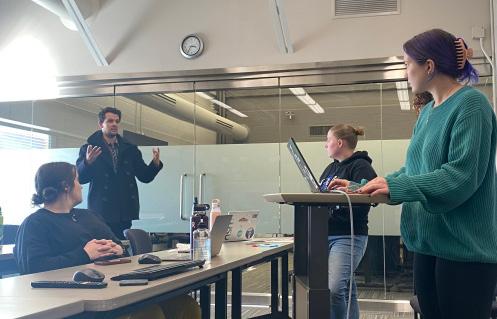
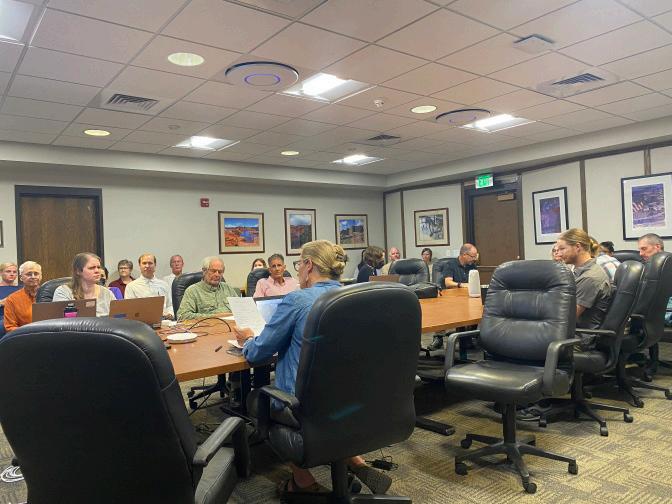
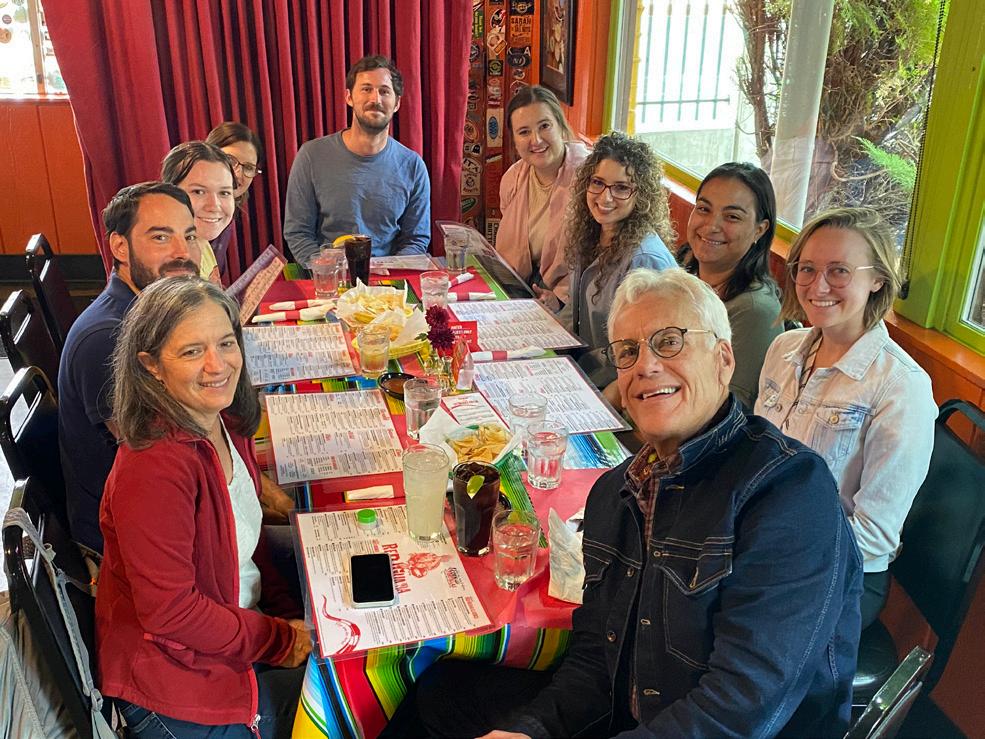

“Why not introduce graduate students to the wickedest problems of the day - saving the Great Salt Lake. They need to feel comfortable in these conversations.”
-Todd Johnson
Spring semester, Professors Sean Michael and Keith Christensen took ten students to learn about and experience coastal communities in Louisiana and Texas. The trip was jokingly called the 2023 Crawfish Tour; puttin’ the LA in LAEP. And yes, they experienced an amazing crawfish boil in New Orleans, as well as many other coastal culinary delights. The entire field trip was a remarkable experience for the students and faculty.

The trip began in New Orleans and explored the many historic and culturally significant landscapes of the area, including the work being done to address sea level rise and inundation during weather events. It was particularly interesting to be exposed to a perspective on water management that is very different from that of the Intermountain West’s scarcity perspective. Our students joined with students from the University of New Orleans and Dana Brown & Associates to tour a recently constructed stormwater demonstration garden, and spent time at the botanic gardens, coastal park projects, and examining the social impacts of natural disaster mitigation strategies.
Leaving New Orleans, the students had the remarkable opportunity of a guided tour of Evergreen Plantation on the west bank of the Mississippi River.

Evergreen Plantation is the most

intact plantation complex in the South with 37 buildings on the National Register of Historic Places, including 22 slave cabins. Evergreen holds the highest historic designation, including landmark status for its agricultural acreage, as well as unfortunately being recently identified as one of the 11 most endangered historic places in the U.S. Exploring Evergreen was a profound opportunity for our students.
Louisiana State University’s landscape architecture program hosted our students on their campus where they were able to share our respective programs. While there they toured the LSU Center for River Studies which houses one of the world’s largest movable bed physical models; the Lower Mississippi River Physical Model. Our students were
truly immersed in the Mississippi River, Louisiana’s disappearing wetlands, and ongoing coastal restoration projects across the coast.
Continuing along the coast to Galveston Texas, they explored and learned about the impact of hurricanes, and the petroleum industry, on coastal communities. They finished the Crawfish Tour in Houston, where LAEP alumni Jereck Boss (BLA ‘93) and Kali Clarke (BLA ‘21) graciously hosted us at the offices of OJB. The exceptional landscapes found in Houston were a great way to conclude the remarkable experience in the coastal region of Texas.
The 2023 Crawfish Tour was a wonderful experience for all involved!

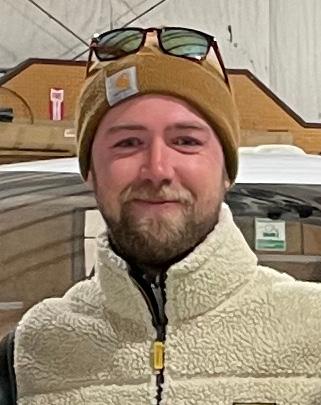



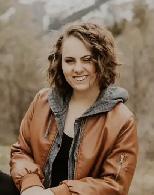
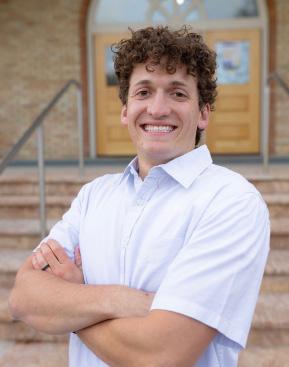
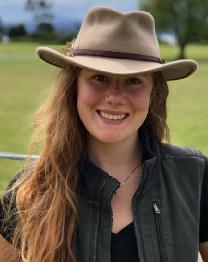


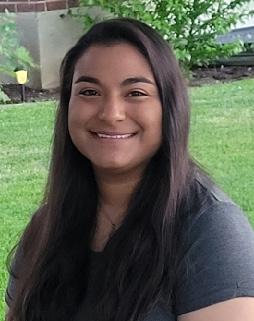
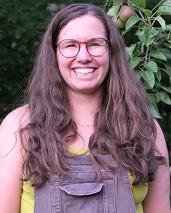
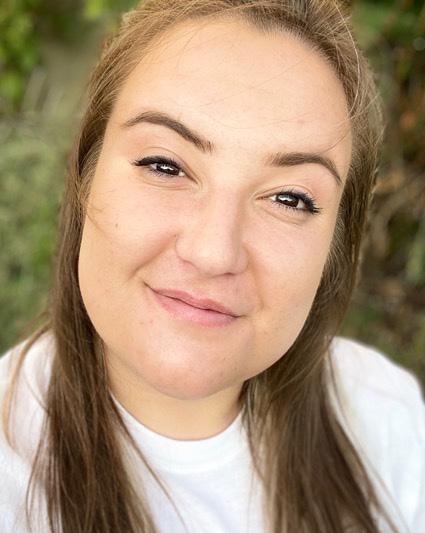

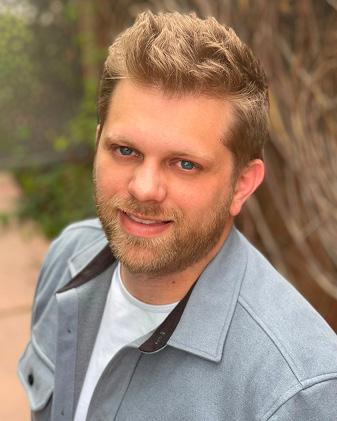

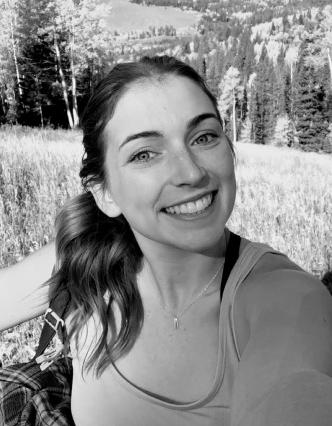
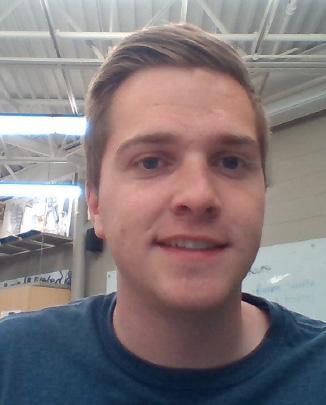
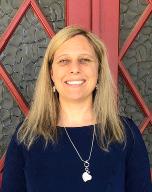
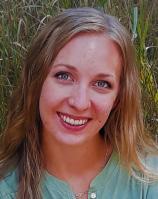
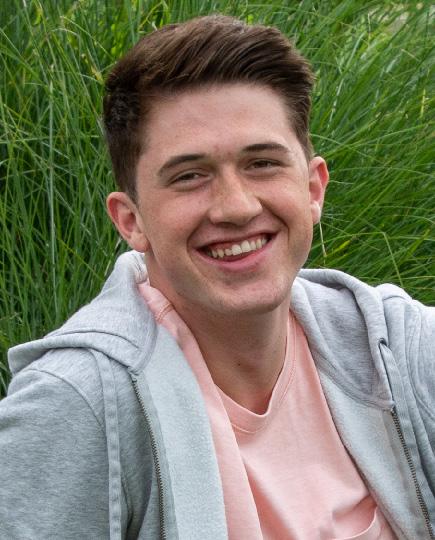
 Joseph Pancoast Professor A.A. Heravi LAEP Scholarship
Tyson Turner Kenneth G. Volkman Memorial Scholarship
Corinne Bahr Kenji Shiozawa Scholarship
Aimee Egbert Diversity in Land Arch
Harrison Merrill Craig Johnson Scholarship
Mary Claire Jennings Huculak Aggie Family
Kori Kurtzeborn David Bell Scholarship
Nicholas Barney David Jensen Scholarship
Christopher Wilson Jackson Family
Alanna Nafziger The 75th Anniversary Scholarship in LAEP
Catherine Frost Professor A.A. Heravi LAEP Faculty
McKall Vigil MLA Class of 1981 Scholarship
Hirone Warner Utah ASLA Memorial Scholarship
Joseph Pancoast Professor A.A. Heravi LAEP Scholarship
Tyson Turner Kenneth G. Volkman Memorial Scholarship
Corinne Bahr Kenji Shiozawa Scholarship
Aimee Egbert Diversity in Land Arch
Harrison Merrill Craig Johnson Scholarship
Mary Claire Jennings Huculak Aggie Family
Kori Kurtzeborn David Bell Scholarship
Nicholas Barney David Jensen Scholarship
Christopher Wilson Jackson Family
Alanna Nafziger The 75th Anniversary Scholarship in LAEP
Catherine Frost Professor A.A. Heravi LAEP Faculty
McKall Vigil MLA Class of 1981 Scholarship
Hirone Warner Utah ASLA Memorial Scholarship
Alumni and friends of LAEP supported students very generously this year. Eighteen professionals served as mentors and enjoyed the opportunity to get to know a few students, see the high caliber of training they are receiving, and sharing their experience through office visits. Students described visiting their mentor’s firm as the “highlight of the semester” and “greatly appreciated the insight and all the advice and tricks.” One student especially appreciated their mentor introducing other friends in the profession. This year mentors were invited to attend food truck Friday in the fall, and we hope to host more in person events in the future.
Representatives from eighteen companies throughout the West attended the LAEP Virtual Career Fair in February to meet potential employees and interact with over 45 students. Following the career fair, Advancement Board members reviewed portfolios for juniors and grads. During the spring Advancement Board meeting, students had the opportunity to sit down and learn from members about their careers and experiences.
Student and alumni efforts to connect paid off. Graduating students found work across the country from North Carolina to Alaska. Juniors and grad students secured internships in a variety of places, from Texas to Minnesota. Thank you to alumni and friends for sharing job opening announcements and your support of LAEP!



The LAEP program has not only encouraged me to grow my knowledge and perspective, but to be bold. My USU family has inspired me to search for internships outside of the Intermountain West, which led me to being the summer intern for Design Workshop’s Austin office. I’m working on various projects that are in or approaching schematic designs and construction documentation. I am putting a lot of skills I learned in Logan to use while learning a lot about day-to-day operations in an incredible firm with an even cooler studio culture.
I am a Planning Intern at the Bear River Association of Governments. I have worked on some cool projects. My favorites have been constructing a hazard mitigation GIS map for communities to apply for government funding and creating a community input map that shows what the community feels they need. I have been able to attend many meetings and conferences that have given me great insight into what planners can accomplish and who they are in communication with. Most days I am in my office working on GIS applications, but I get to travel to different municipalities and go into the field to work with those BRAG services.
I am working an internship with Norris-Design in their Phoenix office this summer. I’ve been working a lot with Jordan Goff and Michaela Clinger who also started shortly after I arrived so it’s been cool to see the USU alum doing well here! Working with this firm has been an awesome experience. They treat the interns super well and have us jump in like any other employee right away. The environment is super supportive and everyone there is working to make sure everyone succeeds. I’ve been able to collaborate on a dozen or so projects already in just about every stage from first time site visits and initial connecting to construction document prep and custom details. I’ve also been able to participate in groups like “Pollinator Power Rangers” and helped put some emails and other resources together for pollinator week to send to company as a whole. A lot of the work is CAD based and I feel more confident in CAD software from the last 6 weeks of working there than I’ve learned in any classes. That being said, I definitely feel like the coursework and teachings did a great job preparing me. We learn a lot about how to learn a program, not necessarily how to be an expert in any one given software which helped me transition easily into the softwares and processes I’m using this summer. That being said, there are still lots of opportunities to work outside of just CAD and create presentations in InDesign, go on site visits/ help with construction administration type work, meet with potential and existing clients and more.
Outside of the work itself, Norris-Design has done a great job of creating a positive work environment that supports people in all stages of their career and from all sorts of backgrounds. I’ve been pleasantly surprised with learning that they give interns paid holidays, some PTO, and a number of other benefits that seasonal type employment doesn’t always offer.

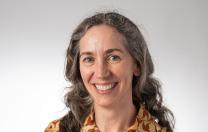
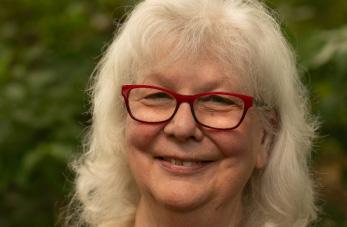



Utah State University Charrette Panel
Panel Discussion: The Future of the Great Salt Lake

Michael Boucher Landscape Architecture

Michael Boucher
Enduring Landscapes
LAEP Distinguished Visiting Professor

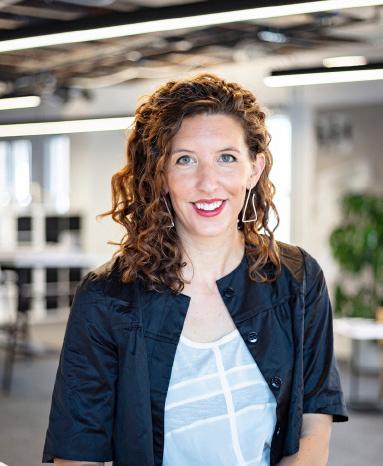

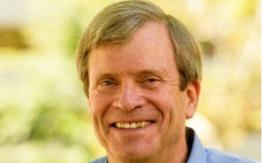
Dan Jost
The Tenuous Renaissance in Playscape Design
University of Pennsylvania Weitzman School of Design
Sean Burkholder
Managine Muddy Methods
Sasaki, Denver Anna Crawrse and Joshua Brooks
Leading with Landscape
9.22.23
Michael Budge, LOCI, Founder and Principal

10.13.23
Jim Burnett, OJB, President
11.17.23
The Nature Conservancy
Dave Livermore
A Call to Action: The Great Salt Lake
Pierre Lavoie, Lighting Designer
12.1.23
Sarah Creachbaum, NPS, Regional Director, Alaska Region
Congratulations to all of our students! Completion of a graduate degree requires hard work and dedication. If you are interested in browsing any of these theses, scan the QR code or visit: digitalcommons.usu.edu/ laep_stures.

Thesis Title: A Case for Educational Communication on Sustainable Stormwater Management Sites Using Interpretive Methods: Applications for Utah State University
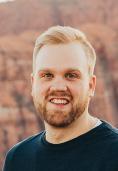
Through a series of case studies on public university campuses in Utah and that states that border it, this study guides the design and implementation of educational communication tactics (such as signage, displays, and/or demonstrations) for an existing stormwater management site on Utah State University’s Logan campus.
Thesis Title: Guiding the Future of the Cache County Fairgrounds

This research is focused on developing a contemporary Visioning Plan to guide the growth and future of the County Fairgrounds, develop design guidelines for future development, and
Thesis Title: Assessing socio-demographic and urban form changes in sprawl retrofitting projects in the United States
This study explores neighborhoods that have experienced urban sprawl retrofitting projects to understand the impact on urban form and socio-demographic structure.
Welcome
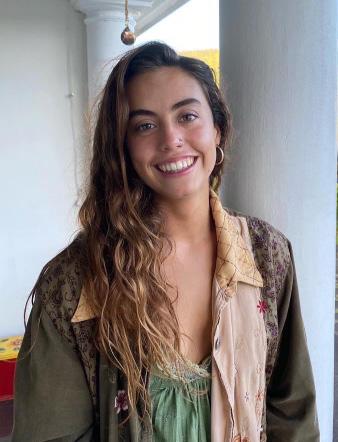
Learn more about these student’s backgrounds at https://caas.usu.edu/laep/graduate/grad-students/index
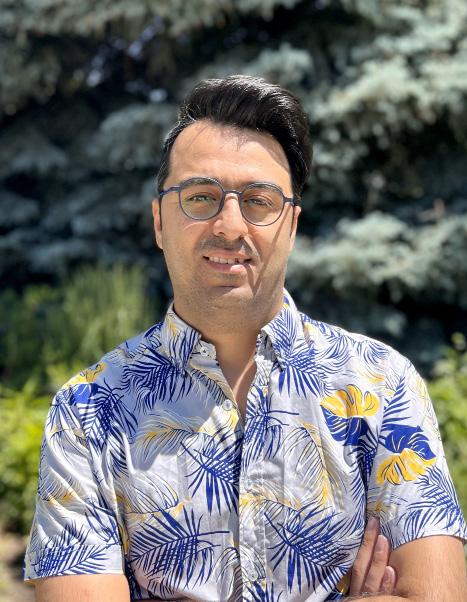
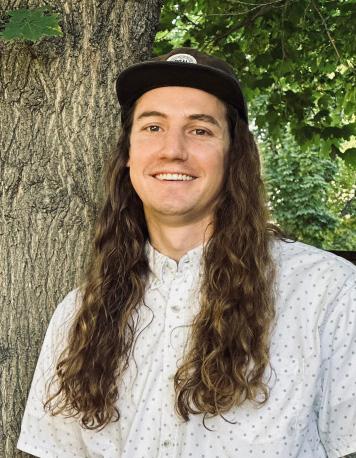
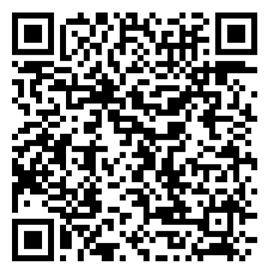

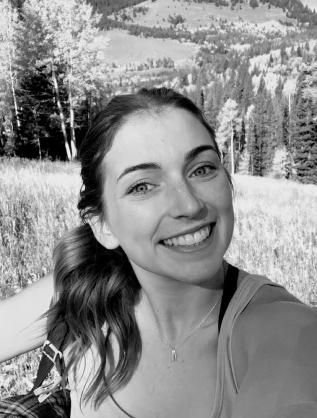
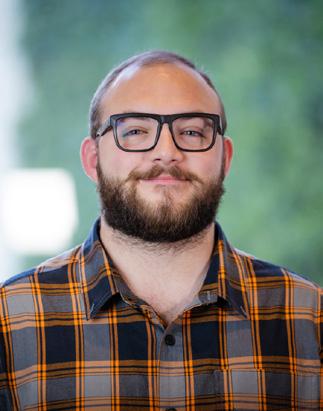
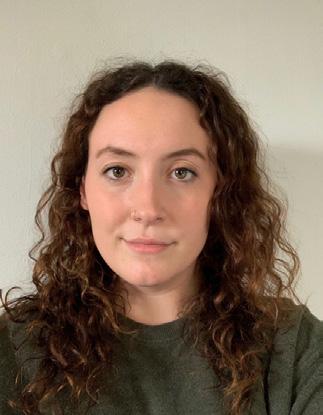
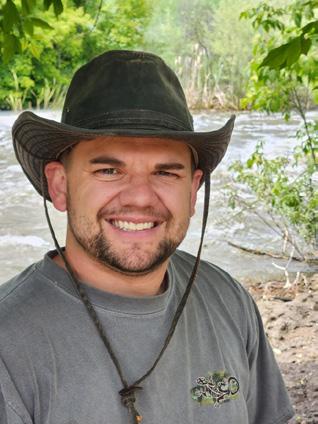


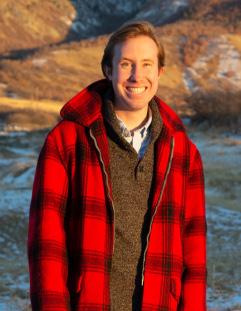 Adam Boden MLA Benjamin Chandler MsEP
Dallin Clark B+MLA
Tanner Daines MLA
Sophia Riffo Jensen MLA
Hadley Ocheltree MLA
Zach Sannar B+MLA
Mary Claire Jennings B+MsEP
Garland Ledbetter B+MsEP
Adam Boden MLA Benjamin Chandler MsEP
Dallin Clark B+MLA
Tanner Daines MLA
Sophia Riffo Jensen MLA
Hadley Ocheltree MLA
Zach Sannar B+MLA
Mary Claire Jennings B+MsEP
Garland Ledbetter B+MsEP
Our faculty are one of the greatest strengths of our program. Check out some brief highlights of what they’ve been up to this year!
David Anderson continues to coordinate the curriculum for our robust LAEP 1030 (Introduction to Landscape Architecture) course. In the 2022-23 academic year, over 1,000 students enrolled in the course. Dave also co-taught the Senior Capstone studio and was very involved in this year’s Great Salt Lake Charrette. In correlation with our work with USU’s Quinney Institute of Land, Water, and Air and the Vice President for Research, Dave was invited to present at Research Landscapes lecture series on the charrette process (The Charrette Process: Working Together to Build Strong Utah Communities).

Brent Chamberlain published articles this year on Artificial Intelligence within landscape architecture, along with colleagues Benjamin George and Ph.D. Candidate Phillip Fernberg. One of the articles was part of a Council of Educators in Landscape Architecture Special Issue and another received the top paper award at the international Digital Landscape Architecture Conference. He was honored to receive the Excellence in Research or Creative Work (Junior) Award from CELA and was this year’s College of Agricultural and Applied Sciences Researcher of the Year.
Keith Christensen continues to serve as LAEP’s Department Head. This past year, in addition to all the paperwork that involves, and teaching thesis methods and grading and drainage, he continued to lead a major research effort to better understand and advocate for the role of the built environment in supporting individuals with disabilities’ community living and participation. Keith is also participating in the NSF research project exploring automating transportation affordances for people living with disabilities using machine learning. During Spring semester Keith led LAEP’s successful accreditation review effort, and he and Professor Sean Michael took students to coastal communities in Louisiana and Texas as part of the “2023 Crawfish Tour; puttin’ the LA in LAEP” student travel experience.




David Evans was pleased to re-introduce our face-to-face introductory graphics course. These core hand graphic skills remain the foundation of student graphic and design evolution, and it was exciting to bring back this essential class to studio. He also taught Site Analysis II, where the Annual Dean’s Prize competition addressed The Other Side Village in SLC. Ten student teams worked on a master-planned neighborhood that provides affordable and permanent housing, developed a pedestrian circulation system, park and open space concepts, a chapel and memorial garden vision and streetscape plans. This studio also enjoyed an all-day field trip, where they visited an array of professional offices and toured a project site under construction.
Benjamin George collaborated with Dr. Brent Chamberlain and doctoral student Phil Fernburg on a research article about the impact of AI in landscape architecture design which received the Award for Scientific Excellence from the Digital Landscape Architecture Conference in Germany. Dr. George has also been working with Department Head Keith Christensen to obtain approval for new degree offerings in Digital Modeling and Visualization, which will prepare student to contribute to a variety of fields through the development and use of advanced visualization technologies.
Daniella Hirschfeld published one paper this year and has two that are in peer review. Published Nature - Communications Earth & Environment, the paper titled “Global survey shows planners use widely varying sea-level rise projections for coastal adaptation” presents interesting findings from 49 different countries. She is also expanding her work on Extreme Heat with two funded projects - One is with NOAA and will look at extreme heat in Salt Lake City, the other is through ASLA and will look at landscape design solutions to extreme heat threats.

Todd Johnson The 2022/23 LAEP year was full of challenge and pleasant surprises, most notably three of our UREC Teams placing first, second and third with their development submittals in Salt Lake City. That is a sweep, with our undergrads and graduate student Addison Martin, putting together strong urban design, architecture, landscape architecture, and business plans for creative solutions – one urban housing, one campus housing, and one suburban mixed use scheme. The most astounding challenge was taking the year to figure out in all studios how to address climate change and the disappearing Great Salt Lake. Our students are learning to participate in “planet survival” they can be…if they so choose.
Caroline Lavoie, MLA, MPL, CSLA, professor in LAEP, led a successful urban design studio in Idaho Falls, collaborating with the Community Development Services of Idaho Falls and LAEP alum (Brian Stevens). Caroline also has a current exhibition at the Livingston Depot Museum in Montana from May 20 - June 9, 2023. The exhibition, “Crossing Borders: The Landscapes and Communities of Highway 89,” highlights her experience driving along Highway 89 from Mexico to Canada and contains her drawings, photographs, and film.
Carlos Licon taught the undergraduate studio in land planning for residential design and a graduate studio in environmental planning. The undergraduate studio focused on local housing development projects in south Cache Valley, and the graduate studio developed a planning tool to understand the connection between water and land uses in the Great Salt Lake watershed. His research continues in planning for sustainable development and resilience. Carlos also participates with the interdisciplinary team working on disability policy.
Sean Michael PhD, FCELA, was voted in as Secretary/Treasurer of the Council of Educators in Landscape Architecture’s Academy of Fellows, and reappointed to the Outdoor Recreation Advisory Committee for Utah’s Division of Outdoor Recreation. His teaching of Foundations in Business Practice in Landscape Architecture led to an analysis of trends in ‘professional practice’ course across North America, and is assisting LAEP students with career readiness, including conducting case studies of firms, and improved job negotiations. To understand the confluence of landscape and recreation in post-COVID America, he explored the Baja Peninsula of Mexico for 5 weeks, organizing a panel of the region’s experts in adventure travel at Overland Expo, the largest event of its kind in the world. He is currently developing a new certificate program in Design Entrepreneurship, which will serve all design students at Utah State.
Jake Powell has enjoyed opportunities to utilize his LAEP Extension position to bridge the great work of the department with the larger profession, communities, and people of Utah. As President of the Utah Chapter of the ASLA he had the “opportunity” to engage in arguing against a legislative proposal within the state of Utah intent on eliminating the Landscape Architecture Licensing Board, which he feels weakens the rigor of licensure in Utah. This spring he also launched two workshops to help people engage in the process of design. Participants learned to analyze their site, develop a program, explore functional relationships, and develop a water wise landscape design. There was also a week-long workshop held in Moab, Utah in partnership with the USU Permaculture Initiative. These workshops were another chance to share the power of landscape architecture to improve people’s lives.


Ole Sleipness enjoyed a productive year, teaching the Recreation Design and Open Space Planning studio, Landscape Materials, and Landscape Graphics courses. In addition to publishing several journal articles and conference presentations, he was awarded a grant through NSF for research on planning and design considerations for electric vehicle charging stations during the coming year.
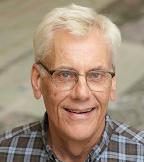


Huaqing Wang has achieved significant milestones in her academic and research endeavors. Firstly, she successfully published a paper titled “Emergency department visits for mental disorders and the built environment: Residential greenspace and historical redlining” in the prestigious journal Landscape and Urban Planning, which holds the #1 rank in the field of urban studies. Additionally, she was honored to receive the Best Poster Award from the Council of Educators in Landscape Architecture, an international community of landscape architecture educators. Furthermore, she secured a seed grant from the Utah Agricultural Experiment Station for a project focused on automating image classification and accuracy assessment processes. These accomplishments demonstrate her dedication to advancing knowledge in urban studies, landscape architecture, and data-driven research methodologies.

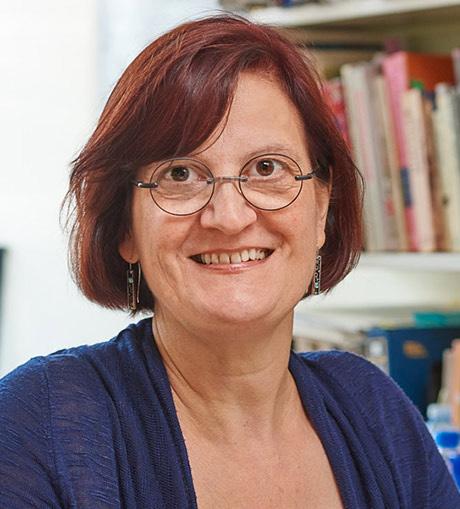

This year’s USU student chapter of ASLA has been lively and productive. They hosted many events for their 110 members, including: A Welcome Back event to inspire studio culture, A Food Drive, 101-Snacks, and Genius Hours. They focused on professional development by bolstering LinkedIn skills, organizing professional headshots, discussing time management, basics of irrigation, internship highlights, tips for portfolios, InDesign, Morpholio Trace, and more! In addition, they continued traditions with an annual holiday party, sweatshirt, and sticker design competition, and ASLA week.
This fall, twenty student members were sent to the National ASLA conference in San Francisco. While they were there, they met alum Corbett Belcher (BLA ‘01) in the CMG office, an opportunity organized by Corinne Bahr (B+MLA ‘24). A group of students also attended the Utah ASLA awards banquet in October where they met alumni and learned how to apply for student awards.
The incoming presidency is more than honored to be a part of this incredible club and are excited for the 2023-2024 school year!








Kurt Altvater is the Senior Vice President of the National Loan and Portfolio Sale Advisors of CBRE Capital Markets. He has over forty years of experience in commercial real estate and participated in the placement of more than $23 billion in loan and property sales at CBRE. Kurt has been a leading sales professional and received CRBE’s National Teamwork Award multiple times.
After graduating from LAEP at Utah State, Kurt spent two years as an architectural designer and planner in San Francisco. The turning point in his career happened while working for John Portman, the author of “Architect as Developer,” at Embarcadero Center. There Kurt learned that the client holds a key role in any project and the importance of balancing aesthetic as well as economic goals. His experience as a project manager in development reaffirmed that the best possible outcomes resulted from collaborative team-oriented process involving designers, planners, users, contractors, and capital partners.
While working with a number of banks, Kurt executed over $1 billion in property loans with a concentration in loans secured by hotel and retail properties. During the savings and loan crisis of the early 1990s, he noticed that Darwinian economics often prevailed and only the strongest projects survived. He also observed that the balance of good design and good economics often resulted in the best outcomes. After spending eleven years at investment banks making real estate loans sold on Wall Street (CMBS) he transitioned to CBRE to advise lenders on the sales of property loans since 2008.
Kurt serves on the LAEP Advancement Board. Since 2015, he has supported students by offering his design, development, and finance expertise during the Utah Real Estate Challenge and promotes the qualifications of LAEP students to the Wasatch front real estate investment community.

Michael Budge brings over 15 years of innovative site design to his practice in Salt Lake City. Known for a unique synthesis of conceptual rigor, technical know-how and an unsurpassed attention to detail, his designs extract influences from the site and surrounding context to create outdoor spaces with a simple and clear aesthetic, that have won recognition on both the local and national stage.
In 2014 he co-founded LOCI, an award-winning Landscape Architecture, Land Planning, Urban design firm that tackles a wide range of project types and scales—from urban design, resorts, institutions, parks and open space, neighborhood and community planning, mixed-use development and private residences.
This diverse range of projects has taken their work into over 38 different countries and 6 different continents.

From time to time, we have to say goodbye to our alumni. We invite you to join us in honoring the lives and impact of these alumni who have recently passed.
Please note, this list was provided by the Office of Advancement at Utah State University, and includes individuals with a recorded death date between August 1, 2022 and July 11, 2023.
It is with great sadness that we share the news that former LAEP faculty member Gerald L. Smith passed away on March 13, from complications of Lewy body dementia.

Following completion of his BLA degree at Iowa State, Gere moved to California, where he had the good fortune to work with noted landscape architects Thomas Church and Garret Eckbo. Eckbo convinced him to return to school for an MLA, which he completed at the University of Illinois in 1968. While there, Gere met fellow students Craig Johnson, Vern Budge, Jerry Fuhriman, and Wendell Morse, all of whom he would eventually join as fellow faculty members at Utah State.
Gere began his teaching career at the University of Illinois in 1965 while still a student, and came to USU in 1968, where he served as a faculty member until 1979. He moved on to become Department Head at Cal Poly, San Luis Obispo, where he retired in 2001. Despite his move to the west coast, Gere and his wife Sally retained a soft-spot in their hearts for Cache Valley, and acquired a cabin in their beloved Logan Canyon to which they would return every summer until just a few years ago. He maintained close ties with the LAEP Department, serving as a member of the LAEP Advancement Board for many years.
Gere loved the outdoors, and would join his former colleagues frequently for their annual fall “Island Park Seminar” (aka fishing trip) on the Henry’s Fork in Island Park. He had a passion for bicycling, completing a ride across America after his retirement, collecting pledges from well-wishers to benefit both the LAEP Department and the Cal Poly LA Department.
Gere was a true craftsman who sought perfection in everything he undertook. He was an avid sketch artist, whose prolific output graced the walls of his home. An “in progress” colored pencil sketch occupied his drawing board at the time of his passing.
Gere was very active in the Council of Educators of Landscape Architecture and the Landscape Architecture Accreditation Board, serving as an external reviewer on visiting accreditation teams on numerous occasions. He was named a Fellow in the American Society of Landscape Architects in 2001.
Gere was interviewed by MLA student Aaron Smith on 8-22-2013 as part of the 75th Anniversary celebration of the LAEP Department, a transcript of which may be accessed here.
Leo Bishop B.F.A., 1964 James Donnelly B.F.A., 1965 Douglas Campbell B.S., 1949 Kerry DeVries BLA., 1975 Willard Erickson B.S., 1951 Marian Christensen B.S., 1941 David McChesney B.F.A., 1966 Arlo Nelson B.S., 1951 John Pehrson B.S., 1958 Orrin Sessions B.S, 1965 Robert Nagel MLA, 1986 Alma Larson B.S., 1957 Michael Mark BLA, 1972 Dirk Sabin BLA, 1983 Van Martin BLA, 1972 Robert Entwistle B.S., 1957 Ann Williams MLA, 2004 Eric Godfrey BLA, 2009The Department of Landscape Architecture and Environmental Planning Magazine
College of Agriculture and Applied Sciences

Utah State University
4005 Old Main Hill Logan, UT 84322-4005 laep.usu.edu